Prevent White Mold in Your Hot Tub: Essential Tips for a Mold-Free Spa
May 14th, 2024
May 14th, 2024
The serene allure of a hot tub often promises a sanctuary of warmth and relaxation, a perfect escape from the stresses of daily life. Yet, this tranquil retreat can be rudely interrupted by the unwelcome presence of white mold. Also known as biofilm, this persistent intruder is not only unsightly but can also affect the performance of your cherished spa. As someone who has navigated the murky waters of hot tub maintenance, I understand the frustration of finding a once-pristine oasis marred by stubborn mold spots.
White mold thrives in the warm, moist environment of a hot tub, and its appearance often catches many by surprise. It typically starts as small, seemingly insignificant flecks that float on the water's surface or cling to the tub's walls. Left unchecked, these flecks can multiply, creating a stubborn biofilm that challenges even the most diligent cleaning routines. Recognizing the early signs and understanding the underlying causes are crucial steps in preventing a full-blown outbreak.
For those who relish the rejuvenating embrace of their hot tub, learning to combat and prevent white mold is essential. Knowledge about this sneaky adversary empowers you to protect your investment and enjoy uninterrupted relaxation. Whether you're a seasoned spa enthusiast or a new owner, understanding how to effectively tackle white mold ensures your hot tub remains a place of blissful retreat.
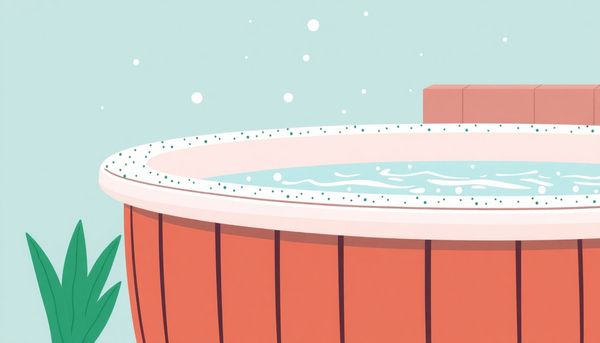
On a sunny afternoon, you might find yourself gazing at your hot tub, expecting a moment of blissful relaxation. Instead, an unwelcome sight greets you: a white, slimy substance clinging to the surfaces and lurking in the water. This is white water mold, a persistent invader that thrives if given half a chance. Understanding its causes is your first step toward reclaiming your peaceful haven.
The culprit behind this nuisance is a naturally occurring fungus rather than algae, as many might mistakenly believe. Hot tub environments, with their warm, moist conditions, provide an ideal breeding ground for this fungus. Imagine your hot tub as a microscopic jungle, where mold spores ride the currents, searching for any nook or cranny to call home. Poor maintenance practices can accelerate this unwelcome invasion. Infrequent cleaning and inconsistent chemical checks allow mold to flourish undetected.
Consider the last time your hot tub had a thorough scrub or when you last tested the water’s chemical balance. Often, mold spores enter the hot tub through contaminated sources, such as swimsuits or water brought in by users. Once introduced, they multiply quickly if the water chemistry is out of balance. Ensuring that your hot tub's water chemistry is regularly tested and adjusted is crucial in preventing these spores from taking root. By staying vigilant and proactive, you can keep your hot tub a mold-free sanctuary for relaxation, rather than a breeding ground for unwanted guests.
Spotting white water mold in your hot tub doesn’t require a magnifying glass. This sneaky intruder often appears as a white, tissue-like substance clinging to the surfaces inside the tub or floating in the water, resembling tiny bits of paper. When you open the cover and find an unexpected cloudiness in the water, that's your first clue. Unlike the vibrant greens and yellows of algae, white water mold is more discreet, making it easy to overlook until it starts to spread.
A neighbor once told me how they mistook the film for leftover sunscreen residue. It's an easy mistake; white water mold can look benign at first glance, often masquerading as something innocuous. However, it’s a fungal phenomenon, more akin to mildew than algae, and it thrives in warm, moist environments. The trouble begins when regular cleaning doesn't happen, allowing this unwelcome guest to settle in.
Touch the mold, and you'll feel a slimy, slick texture that confirms it's not just dirt or debris. This fungus feeds on the biofilm lining the pipes, creating an ideal breeding ground. Regular inspection and maintenance are crucial. If you spot that signature shimmer on the water's surface or feel a slippery coating on the walls, it’s time to take action. Recognizing these signs early can save a lot of effort in the long run, ensuring your hot tub remains a place of relaxation, not frustration.
Before tackling the persistent nemesis of white water mold, it’s crucial to pinpoint the factors that may have led to its unwelcome presence. Picture yourself on a sunny evening, excited to unwind in your hot tub, only to discover that instead of serenity, you are met with unsightly mold. Such an instance is not merely about the mold itself; it often signifies an imbalance or oversight.
One primary contributor is neglecting regular cleaning and sanitization. It’s easy to overlook routine maintenance amidst busy schedules, but without it, mold finds a perfect breeding ground. Consider your hot tub as a living entity that thrives on consistent care to keep unwanted guests at bay.
Chemical imbalances in the water also play a significant role. If you've ever noticed a slight cloudiness or an odd smell, it might be a sign of fluctuating pH levels or inadequate chlorine. Such inconsistencies can easily pave the way for mold to flourish. Regular testing with kits that measure everything from pH to alkalinity becomes your best ally.
Another sneaky contributor is poor circulation. Stagnant water is like a warm invitation to mold. Ensuring that your filtration system is working efficiently can help prevent this. Imagine your hot tub's filters as the lungs, essential for purifying and keeping the water pristine. By identifying these contributing factors, you arm yourself with the knowledge needed to prevent white water mold from making a comeback.
Preventative measures for keeping white mold at bay are like setting up a reliable defense system that protects the joy of your hot tub experience. First and foremost, maintaining a consistent cleaning schedule is crucial. Just as you wouldn’t neglect your car’s oil changes, regular cleaning of your hot tub prevents unwanted intrusions. It’s not just about wiping surfaces; pay attention to filters, pipes, and jets where mold loves to hide.
Balanced water chemistry plays a pivotal role. Each week, test for pH, alkalinity, and sanitizer levels, as these are your primary hurdles against mold. Think of it as maintaining a healthy diet for your tub; if the balance is off, mold finds an open invitation. Utilize a chlorine-based shock treatment after heavy usage; it’s akin to giving your hot tub a rejuvenating spa day, banishing lurking contaminants.
Incorporating a cover for your hot tub when not in use is akin to pulling a warm blanket over your bed; it keeps debris out and maintains optimal temperature and chemical levels. Ventilate your hot tub area, allowing fresh air to circulate and preventing the moist environment mold adores.
A personal tip: I keep a small, waterproof notebook nearby to jot down maintenance notes. This simple habit ensures I don’t overlook the small tasks that make a big difference. By integrating these preventative strategies into your routine, you preserve the pristine condition of your hot tub, ensuring every soak remains a pleasurable escape.
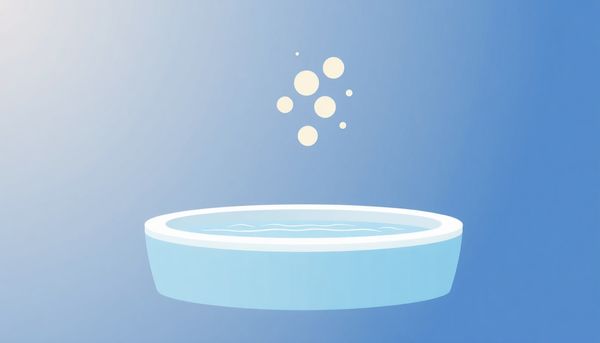
Confronting the unwelcome guest of white mold in your hot tub doesn’t have to be a daunting task. One autumn afternoon, I noticed that stubborn white patches were forming on the interior surfaces of my own hot tub. With a bit of research and elbow grease, I managed to bid farewell to this pesky intruder. Here’s how you can do the same.
Begin by draining the hot tub completely; this clears the stage for a more thorough cleaning. Next, grab a soft brush and some distilled white vinegar. Scrub all surfaces where the mold is present, ensuring you reach the nooks and crannies where it might be hiding. Sometimes, mold can cling tenaciously to the walls and fittings, so persistence is key.
While scrubbing, take the opportunity to remove and clean the filter. Soak it in a filter cleaner or a diluted bleach solution to obliterate any lingering spores. Once your tub is sparkling clean, refill it with fresh water and balance the essential chemicals, such as pH and alkalinity, to ensure a healthy bathing environment.
For added measure, consider shocking the water with a chlorine-based shock treatment to kill any remaining mold spores. This process oxidizes the water, eliminating contaminants before they become a nuisance. Regular maintenance, including weekly water testing, will significantly reduce the chances of a repeat mold invasion.
Remember, keeping your hot tub pristine is not just about aesthetics; it’s about creating a safe and enjoyable space for relaxation. By following these steps, you can keep white mold at bay and enjoy your hot tub without worry.
Peering into your once-clear hot tub only to find it clouded with an unwelcome white film can be unsettling. Though it might seem mysterious, the culprit is often white water mold, a fungal invader that thrives in warm, moist environments. Understanding how it manages to sneak into your oasis can help prevent future invasions.
White water mold finds its way into hot tubs through various means, often starting with contaminated water sources. If your water supply isn't filtered properly, it's easy for spores to hitch a ride. Moreover, remnants of the mold might linger in shared bathing suits or towels, reintroducing this pesky fungus each time they're used.
Inadequate sanitization is another frequent cause. Skimping on the regular cleaning of your hot tub not only allows existing mold to flourish but also opens the door for new spores to settle comfortably. Poor water circulation can contribute further, creating stagnant spots where mold can easily multiply.
A friend once confessed that neglecting to clean his tub's filters for months resulted in a surprising discovery of white mold. It served as a vivid reminder that without vigilant maintenance, this fungus is eager to make itself at home.
Once you've pinpointed these causes, tackling the problem becomes significantly easier. By addressing the root of the issue, you can enjoy your hot tub without the constant worry of this unwelcome guest making a comeback.
Battling white mold in a hot tub isn't just a chore; it's an opportunity to restore your oasis. A friend once shared their own saga of dealing with this pesky fungus, and the steps taken were nothing short of transformative. The first step is to drain the tub completely. This might seem drastic, but it’s essential to eliminate the thriving habitat of mold.
Next, grab a sponge or soft brush and scrub every surface—walls, jets, and even the cover. Use a mild, hot tub-safe cleaner to ensure that you’re not introducing more harmful substances into your tub. Think of this as a deep clean for your beloved relaxation spot.
After scrubbing, refill the tub with fresh water. This is where the magic happens: apply a chlorine shock treatment. It’s like giving your hot tub a reset button, wiping out any mold spores left behind. Follow up with an oxidizer to enhance water clarity and efficiency. It’s not just about killing mold; it's about reviving your tub’s sparkle.
Finally, balance the water chemistry by testing essential components like pH and alkalinity. A balanced tub isn’t just healthier; it’s also less inviting to future fungal visitors. Regular monitoring with test strips will help keep everything in check, serving as your early warning system against mold resurgence.
With these steps, your hot tub will be mold-free and ready for those rejuvenating soaks you treasure.
If a haven of relaxation is what you seek, keeping your hot tub free from white water mold is essential. This pesky fungus thrives where regular maintenance is neglected. So, what can one do to ward off this unwelcome guest? Establish a consistent preventive maintenance routine, and you’ll be one step ahead.
Begin with regular water testing. It's akin to checking the oil in your car; a small effort can prevent large headaches. Weekly tests for pH levels, alkalinity, and sanitizer concentrations will alert you to imbalances that could invite mold. Adjust these levels as needed, ensuring the water remains inhospitable to unwanted growth.
Next, consider your filtration system your best ally. Clean the filters every two weeks, or more frequently if your tub sees heavy use. A neglected filter is a breeding ground for mold, but a clean one ensures smooth circulation and effective removal of debris.
Incorporating a routine shock treatment is another powerful tool. Use a chlorine or non-chlorine shock product weekly to oxidize contaminants and maintain crystal-clear water. Think of it as a refresh button, resetting the water environment to its ideal state.
Remember to clean the surfaces regularly. Even the most diligent water care cannot prevent mold if it finds a cozy corner to settle in. Wipe down the shell and cover, removing biofilm or any signs of growth.
By weaving these preventive practices into your hot tub care routine, you create a fortress against white water mold. Not only will you enjoy peace of mind, but a pristine tub ready for any spontaneous soak.
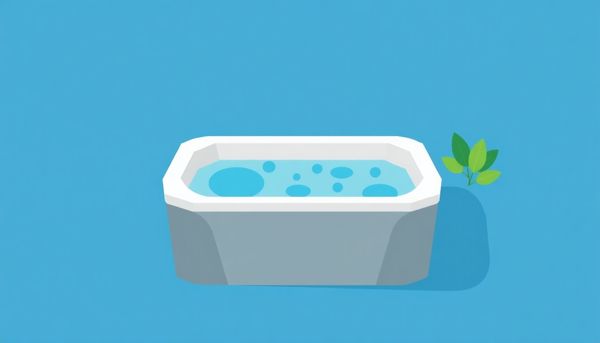
Maintaining a hot tub is like caring for a beloved pet; neglect invites trouble. To keep white water mold at bay, consistent maintenance is your trusty ally. Begin with checking the water chemistry routinely. A reliable test kit becomes your best friend here, helping you ensure that chlorine or bromine levels remain balanced. These chemical sentinels fend off unwanted guests like mold, maintaining a sparkling oasis.
Next, consider the filter's role as the unsung hero. Rinse it weekly and give it a deep clean monthly. A clean filter works tirelessly to trap impurities, preventing mold spores from finding a cozy corner to thrive in. It's like setting up a barrier at the gates of your hot tub.
Regularly shocking the water is equally crucial. A good shock treatment oxidizes organic matter, including any potential mold, leaving your water as inviting as a warm hug. This process doesn’t just protect against mold; it also ensures that the water remains clear and fresh-smelling.
Beyond chemicals and filters, simple habits like showering before slipping into the hot tub and keeping the cover clean extend your mold-free streak. These steps might sound mundane but consider them part of a ritual that ensures every soak is worry-free.
In essence, white water mold stands little chance against a regimen of attentive care. By weaving these maintenance practices into your routine, you're not just preventing mold; you're preserving a sanctuary of relaxation and enjoyment, ready whenever you need it.
Testing your hot tub water regularly can feel like a tedious chore, but it's essential in the battle against white water mold. Think of these tests as your hot tub's health check-ups. Just like you'd rather prevent a cold than nurse one, catching imbalances early on can save a lot of hassle down the line. During a lazy summer afternoon, I once neglected my routine checks, assuming everything was fine. A week later, I faced an unpleasant surprise—cloudy water and that pesky white mold.
The key lies in covering all bases. Use test strips to measure total hardness, chlorine levels, bromine, free chlorine, pH balance, total alkalinity, and cyanuric acid. Each component plays a vital role in maintaining your tub’s ecosystem. For instance, a low pH can irritate the skin and eyes, while high alkalinity makes your water cloudy. If these parameters are kept in check, mold stands no chance of gaining a foothold.
One might wonder why these steps are necessary if the water appears clean. The truth is, mold spores are sneaky. They float around waiting for the perfect moment to strike. By keeping these tests a regular part of your routine, you create an environment where mold has little opportunity to thrive. This proactive approach, though seemingly simple, can vastly reduce the likelihood of future infestations, ensuring your hot tub remains a source of relaxation, not frustration.
When you first discover that uninvited guest—white water mold—lurking in your hot tub, the urge to reclaim your relaxing sanctuary is immediate. One of the most effective allies you can recruit for this battle is chlorine-based treatments. It's not just about splashing in some chemicals and hoping for the best; this step requires a bit of understanding and precision.
Chlorine works by oxidizing the organic materials found in mold, effectively breaking down its cell walls and rendering it harmless. Start by raising the chlorine levels significantly, a process known as "shocking" your hot tub. You’ll need to bring the chlorine concentration up to at least 10 parts per million to ensure you’re tackling the mold aggressively. This may sound intense, but trust me, it’s a necessary maneuver to eradicate that stubborn fungus.
In my own experience, I found it helpful to run the jets for a good 30 minutes after shocking. This circulates the treatment throughout the entire system, reaching all those sneaky crevices where mold likes to hide. Leave the cover off during this process to prevent off-gassing and to allow any chemical fumes to dissipate safely.
Remember, thoroughness is key. Afterward, keep an eye on those chlorine levels, allowing them to gradually return to a safe range before you take your next dip. It’s all about balance—ensuring your tub is both a mold-free haven and a safe place to unwind. Regular testing and adjusting of chemical levels will keep your hot tub in top shape, preventing any future mold invasions.
Thorough cleaning is the cornerstone of banishing white mold from your hot tub. Start by draining all the water, ensuring no sneaky pockets of mold remain hidden. Armed with a soft brush and a gentle non-abrasive cleaner, scrub every surface—especially those nooks and crannies where mold loves to hide. Pay special attention to the water jets and filters, as they often become breeding grounds for this pesky fungus. Consider removing the filters entirely for a more vigorous cleaning routine; soaking them overnight in a filter cleaner can make a world of difference.
Once every last surface is gleaming, focus on the plumbing system. A plumbing pipe cleaner or a hot tub line flush will help dislodge any mold clinging to the insides of the pipes. Not only does this step eradicate existing mold, but it also ensures that your future soaks are free from unwelcome surprises.
Replenishing the tub with fresh, clean water brings you another step closer to a mold-free oasis. Before refilling, consider using a pre-filter to remove impurities from the incoming water. This simple step can significantly reduce the likelihood of mold spores sneaking back into your tub. You're not just cleaning a hot tub; you're reclaiming your relaxing haven from an unwelcome intruder. By staying vigilant, you'll keep white mold at bay, ensuring your hot tub remains a place of pure tranquility.

Owning a hot tub brings luxury to your backyard, but it also requires a diligent eye for maintenance. Ensuring your tub remains an oasis of relaxation starts with mastering a few care essentials. From personal experience, I know the frustration of battling white water mold, a pesky fungus that can quickly turn a peaceful soak into a cleaning nightmare.
Begin by establishing a routine. Consistent water testing is crucial; aim to check the water chemistry at least once a week. This vigilance will help maintain balanced pH levels and prevent the conditions that encourage mold growth. Invest in a reliable testing kit that easily measures Total Hardness, Chlorine, Bromine, and more. These tests are your first line of defense against unwanted guests like mold.
Regular sanitization is another pillar of hot tub care. Use a chlorine-based shock treatment periodically, especially after heavy use. It not only clears cloudy water but also eliminates bacteria and breaks down contaminants. An oxidizer in the formula ensures any residual chlorine is neutralized, keeping your water fresh and inviting.
Don’t forget the power of physical cleaning. Monthly deep cleans of filters and thoroughly scrubbing the tub’s interior can greatly reduce mold risks. When done consistently, these tasks blend seamlessly into your routine, like brushing teeth or taking out the trash. Over time, they save you from the hassle and discomfort of dealing with persistent mold issues. In essence, a well-maintained hot tub is a sanctuary that rewards the effort you put into it with every bubbling soak.
Spotting white water mold in your hot tub can feel like discovering an uninvited guest at a party. This sneaky mold often masquerades as wispy clumps or a slimy film that can cling to the sides of your tub and even float around in the water. Unlike algae, this mold thrives in a different realm—it's a fungus that can appear translucent or slightly cloudy white, making it a master of disguise.
When I first encountered white water mold in my own hot tub, I mistook it for leftover soap residue. Only after noticing its stubborn persistence did I realize it was something more insidious. To properly identify this mold, look for its characteristic clumps that resemble wet tissue paper, often found in corners or floating on the water's surface. It tends to have a slimy texture, which is a telltale sign that you're dealing with more than just dirt.
Stay vigilant, especially if you notice your water chemistry fluctuating unexpectedly despite your best efforts to balance it. Regularly testing your water can help catch this fungus early, preventing it from throwing a wrench in your relaxation plans. Remember, this mold thrives in poorly maintained environments, so consistent care is your best defense against its unwelcome presence. By familiarizing yourself with its appearance and behavior, you can quickly address any mold issues before they spoil your hot tub experience.
Tackling white water mold begins with a solid action plan, one that leaves no stone unturned. Start by draining your hot tub completely—this might feel like an inconvenience, but it's a crucial step in ensuring every trace of the mold is addressed. When my friend Sarah faced this pesky issue, she discovered that draining and thoroughly cleaning every nook and cranny with a vinegar or bleach solution worked wonders. Be sure to scrub the shell, jets, and any removable parts meticulously.
Next, replacing the filter is a must. Mold spores cling to filters like a lifeline, so a fresh filter is key to preventing future outbreaks. Once your tub is spotless, refill it with water and bring out the big guns: a chlorine-based shock treatment. This will not only sanitize the water but also eliminate lingering spores. Remember to balance the chemicals afterward, keeping pH levels between 7.2 and 7.8, which is crucial for maintaining a hostile environment for mold growth.
As you settle back into enjoying your hot tub, maintain vigilance by establishing a routine. Regularly check chemical levels and keep your filter clean. Embracing these maintenance habits ensures that white water mold becomes a ghost of problems past. Sarah’s experience taught her that with consistency, the dreaded mold became a mere memory.
Battling white mold in your hot tub is like playing an endless game of whack-a-mole—unless you nip it in the bud with proactive measures. A stitch in time, as they say, saves nine, and when it comes to mold, prevention is your best ally. Start by embracing a habit of vigilance. Regularly test the water with kits that check essential chemistries such as pH, alkalinity, and sanitizer levels. It's like giving your hot tub a frequent health check-up, ensuring everything is in balance.
Changing the water every three to four months might seem like a chore, but it's a crucial step in keeping mold at bay. Consider it your regular chance to hit the refresh button, washing out any lingering spores before they gain a foothold. Combine this with a weekly shock treatment using a chlorine-based product to obliterate any stubborn microorganisms that might be hiding in the nooks and crannies.
Don't underestimate the role of a sturdy cover, either. Keeping your hot tub covered when not in use not only conserves heat but also prevents debris and spores from settling in the water. Lastly, always shower before taking a dip. It may sound simple, but minimizing the introduction of oils, lotions, and dirt can significantly reduce mold’s favorite breeding grounds.
By turning these habits into second nature, you’ll transform mold prevention from a daunting task into a seamless part of your hot tub routine. With this commitment, your hot tub will remain a sanctuary of relaxation, unmarred by the unwelcome presence of mold.
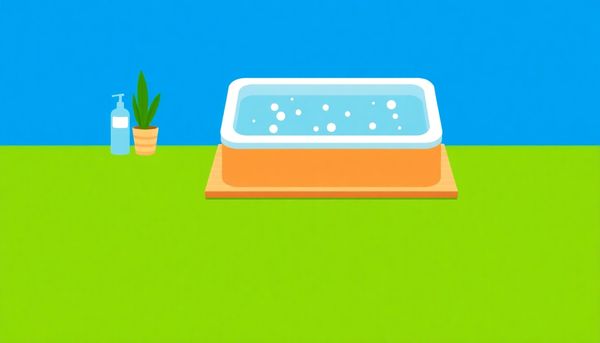
When faced with the unwelcome guest of white mold in your hot tub, reaching for a chlorine shock treatment can be your saving grace. This potent solution not only tackles the visible invader but strikes at the heart of its growth. Think of chlorine shock as a robust offensive maneuver, swiftly neutralizing both the mold and any lingering spores that might be lurking in your tub.
To begin, make sure your hot tub’s water is at the right pH level, typically between 7.2 and 7.8. This ensures the chlorine shock can work effectively. Measure out the recommended amount of chlorine shock—usually about one to two ounces per 500 gallons of water, but always check your product's instructions. Once added, circulate the water by running the jets for at least 30 minutes. This helps distribute the shock evenly, ensuring no corner of your hot tub is left untreated.
My friend had a hot tub that turned into a science experiment overnight, with mold thriving in every crevice. After using a chlorine shock, not only did it clear up the mold, but it also left the water sparkling clean and reinvigorated with that fresh, sterile smell typical of a well-maintained spa.
However, remember that this isn’t just a one-time fix. Regularly shocking your hot tub, possibly after every heavy use, can prevent the mold from ever making a return visit. It's about keeping your hot tub a sanctuary of relaxation rather than a breeding ground for unwanted guests.
Spotting white water mold in your hot tub can feel a bit like discovering an uninvited guest at your party. This unassuming, cottony substance tends to lurk on the water's surface and clings to the sides of your tub, sometimes mimicking the look of shredded toilet paper caught in a gentle swirl. Recognizing its presence is the first step to maintaining the pristine waters you love.
Stepping closer to inspect your tub, you might notice a slimy texture under your fingers, especially along the waterline or in the crevices where the water circulates. This mold isn't tricky only because it thrives in neglected corners but also because it can be sneaky, masquerading as regular dirt or debris. Its persistence is notorious, and if left unchecked, it multiplies faster than you can say "relaxation".
A close friend once shared a tale of how they dismissed the early signs, thinking it was just residue from a particularly rowdy bubble bath. Only later did they realize the stubborn intruder was white water mold, requiring a more rigorous cleaning regimen than anticipated. An important clue in identifying this fungi is its resilience; household cleaners may not faze it, and it seems to return with a vengeance if not properly treated.
Remember, awareness is your ally in preserving the sanctity of your personal spa. Regular checks and swift action when spotting the first signs can save you from a battle with this persistent mold.
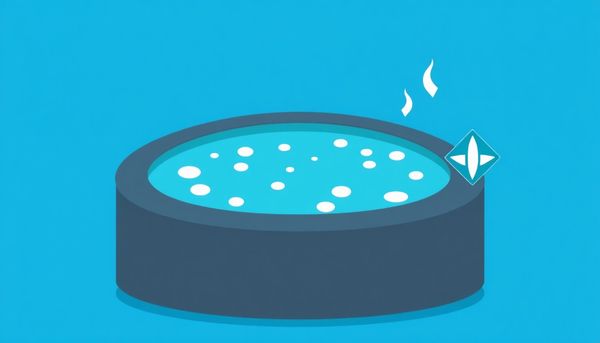
This article provided insights into maintaining your pool. Start your pool care journey today!
Want to become a pool maintenance expert? Our free Pool School course covers everything you need to know about pool care. From basic maintenance to advanced troubleshooting, you'll learn how to:
Join over 10,000 pool owners who have already transformed their pool care routine. Get started with our free Pool School course today!